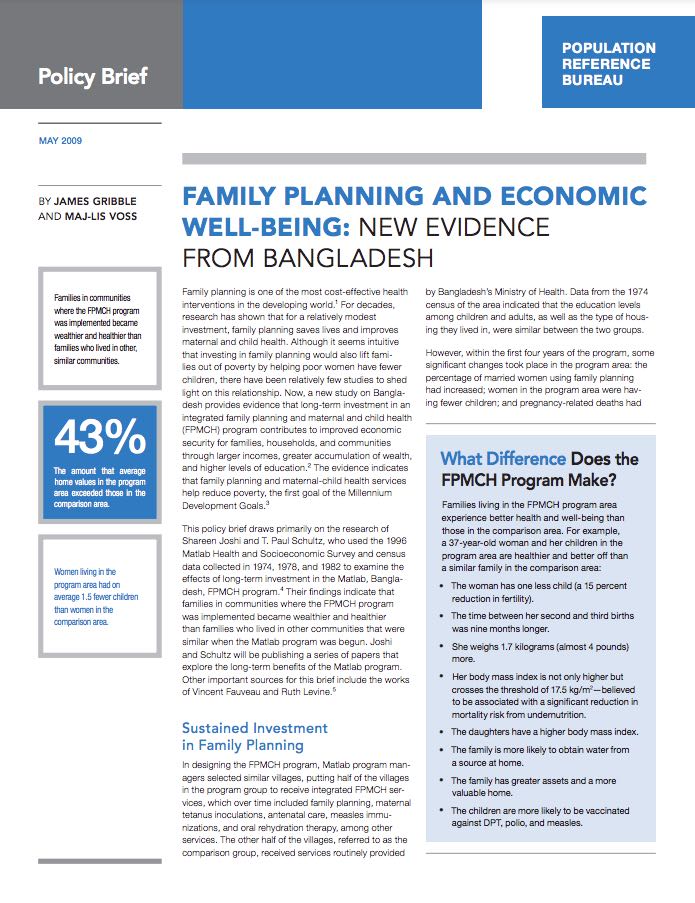
Family Planning and Economic Well-Being: New Evidence From Bangladesh
Date
July 1, 2009
Author
(June 2009) Family planning is one of the most cost-effective health interventions in the developing world. For decades, research has shown that for a relatively modest investment, family planning saves lives and improves maternal and child health. Although it seems intuitive that investing in family planning would also lift families out of poverty by helping poor women have fewer children, there have been relatively few studies to shed light on this relationship. Now, a new study on Bangladesh provides evidence that long-term investment in an integrated family planning and maternal and child health (FPMCH) program contributes to improved economic security for families, households, and communities through larger incomes, greater accumulation of wealth, and higher levels of education. The evidence indicates that family planning and maternal-child health services help reduce poverty, the first goal of the Millennium Development Goals.
What Difference Does the FPMCH Program Make?
Families living in the FPMCH program area experience better health and well-being than those in the comparison area. For example, a 37-year-old woman and her children in the program area are healthier and better off than a similar family in the comparison area:
- The woman has one less child (a 15 percent reduction in fertility).
- The time between her second and third births was nine months longer.
- She weighs 1.7 kilograms (almost 4 pounds) more.
- Her body mass index is not only higher but crosses the threshold of 17.5 kg/m2—believed to be associated with a significant reduction in mortality risk from undernutrition.
- The daughters have a higher body mass index.
- The family is more likely to obtain water from a source at home.
- The family has greater assets and a more valuable home.
- The children are more likely to be vaccinated against DPT, polio, and measles.
Listen to an interview with Jay Gribble about this report.

 ">
">